10 Worst Punishments in History of Mankind
Throughout human history, there have been punishments that were incredibly harsh and horrifying. These punishments were used to control, punish, and scare people. Prepare yourself as we go into the dark realm of historical atrocities, where unimaginable suffering was inflicted upon countless individuals, leaving a lasting impact on humanity. Today, we will discuss 10 of them. So, lets start!
#1-The Rack
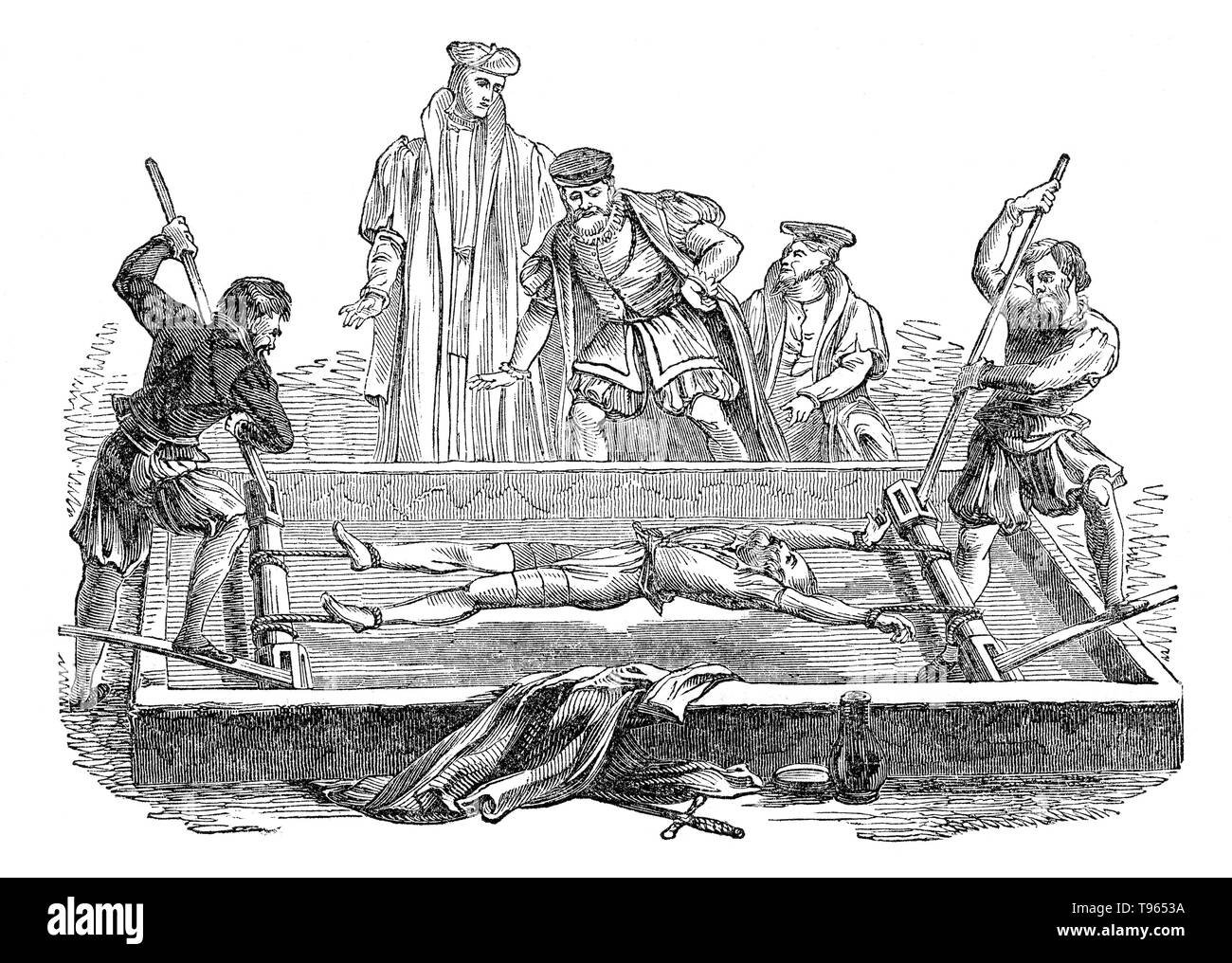
Death by the rack was a medieval punishment that inflicted excruciating pain on its victims. The rack, a wooden frame with rollers, was used to stretch the victim's body. As the torturer turned the handle, the person's limbs were pulled in opposite directions, resulting in dislocated joints, torn muscles, and broken bones. This method of punishment aimed to extract confessions or simply to cause immense suffering. Victims endured unimaginable pain and often faced severe internal injuries. Death by the rack served as a horrifying deterrent, as the prospect of enduring such agony was meant to discourage others from committing crimes or defying authority.
#2-Hanged,drawn and quartered

"Hanged, drawn, and quartered" was a gruesome punishment employed in medieval England for treasonous offenses. The process involved multiple agonizing stages. First, the condemned person was hanged by the neck until almost dead but not completely. Next, they were cut down and subjected to "drawing." This involved being dragged by a horse or another method, while naked, through the streets to the execution site. The purpose was to further humiliate and weaken the individual. Finally, the person was "quartered." Their body was divided into four parts by cutting off the limbs and separating the torso. These body parts were then publicly displayed as a deterrent to others. This punishment was meant to inflict excruciating pain, public shame, and to symbolize the severing of the traitor's loyalty to the state. The practice of being hanged, drawn, and quartered was a horrifying and brutal spectacle, leaving a lasting impression on those who witnessed it.
#3-Judas Chair
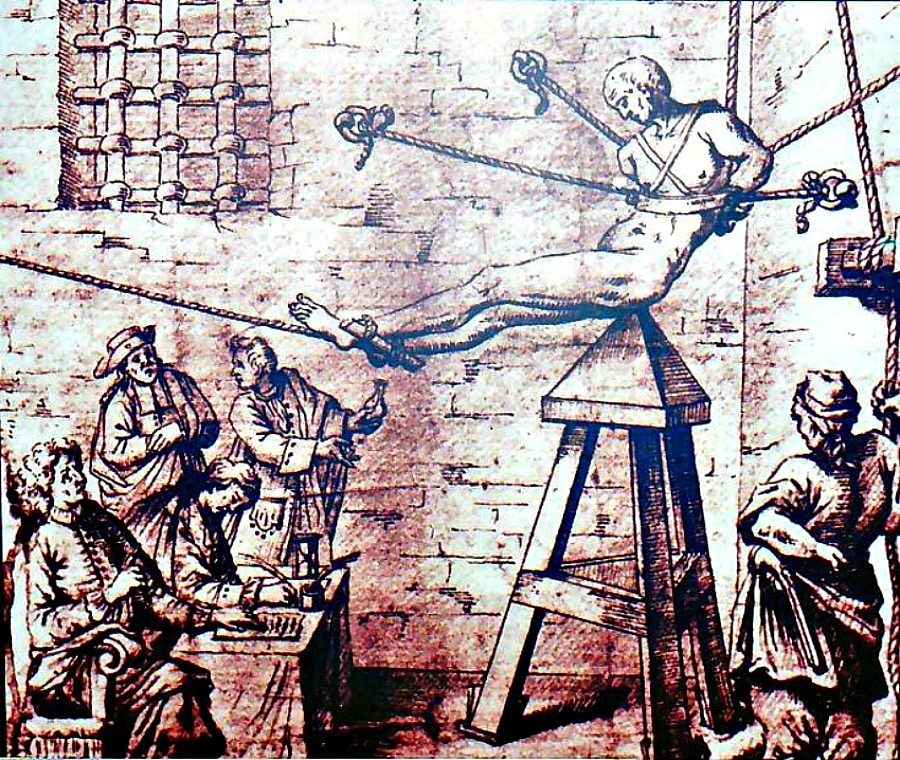
The Judas Chair was a macabre instrument of torture and execution used during the medieval period. It was a tall, pyramid-shaped chair made of solid wood or metal. The victim would be placed on the pointed apex of the chair and restrained with straps or ropes. The torturer would then gradually add weight to the victim, causing the sharp point to penetrate their rectum or vagina. The purpose of the Judas Chair was to inflict extreme pain and suffering. As the victim's body weight bore down on the pointed tip, the pressure would gradually increase, resulting in severe internal injuries and excruciating agony. This method of torture often led to permanent damage, hemorrhaging, and in some cases, death.
The Judas Chair was not only physically torturous, but it was also psychologically traumatizing. The fear and anticipation of the impending pain, coupled with the public display of the punishment, served as a means of control and intimidation. The Judas Chair stands as a testament to the depths of human cruelty, reminding us of the horrifying methods employed throughout history to inflict pain and torment upon fellow human beings.
#4-Boiling

Boiling as a method of punishment dates back to ancient times and was used in various cultures as a particularly cruel and gruesome form of execution. The punishment involved submerging the victim in a container filled with boiling liquid, such as water, oil, or tar. The process of boiling inflicted unimaginable suffering on the individual. As their body was submerged in the scalding liquid, the extreme heat caused severe burns, blistering, and ultimately, the destruction of skin and underlying tissues. The intense pain experienced during this ordeal was excruciating, often leading to shock and loss of consciousness. Death, in most cases, resulted from a combination of extensive tissue damage, organ failure, and severe burns.
Boiling was not only a method of execution but also a means of torture and intimidation. The public nature of the punishment served to instill fear and deter others from engaging in criminal or rebellious activities. The use of boiling as a punishment stands as a stark reminder of the brutal lengths to which humans have gone in inflicting suffering upon one another. Its sheer cruelty and the agony endured by its victims paint a chilling picture of the darker aspects of human history.
#5-The Catherine Wheel

The Catherine Wheel was a horrifying form of punishment employed during medieval times. It involved tying the victim to a large wheel or cartwheel-like structure. The limbs of the victim were stretched and secured to the spokes of the wheel. The torturer would then proceed to spin the wheel, inflicting extreme pain and causing bone fractures and dislocations. As the wheel turned, the victim would be subjected to excruciating torment. The spinning motion of the wheel would gradually break the victim's bones and tear their muscles. The pain endured during this ordeal was agonizing, and the injuries sustained were often severe.
The Catherine Wheel served as a brutal public spectacle, intended to both punish and intimidate. The sight of a person being twisted and mangled on the wheel was meant to strike fear into the hearts of onlookers, discouraging them from committing similar crimes. The use of the Catherine Wheel stands as a chilling reminder of the barbarity that existed in the past. It serves as a testament to the depths of human cruelty and the unimaginable suffering inflicted upon individuals throughout history.
#6-Head Crusher

The Head Crusher was a medieval torture device designed to inflict extreme pain and torment on its victims. It consisted of a metal helmet-like cap that was placed on the head of the victim. The cap had a metal plate that was lowered gradually by turning a screw, applying increasing pressure to the skull. As the screw was turned, the metal plate pressed against the victim's head, causing excruciating pain and crushing the skull. The pressure exerted by the device would lead to the fracturing of bones, bursting of eyes, and often resulted in death. The Head Crusher was not only physically torturous, but it also had a psychological impact. The anticipation of the tightening and the feeling of impending doom created immense fear and anguish in the victim's mind.
This torture device was used as a means of punishment and interrogation, aiming to extract confessions or simply to inflict unimaginable suffering. Its purpose was to demonstrate the power and authority of those administering the punishment, as well as to deter others from defying or challenging the established order. The Head Crusher serves as a chilling reminder of the cruelty and inhumanity that humans are capable of inflicting upon one another. It stands as a stark symbol of the depths to which humanity can sink in the pursuit of control and dominance.
#7-Flaying
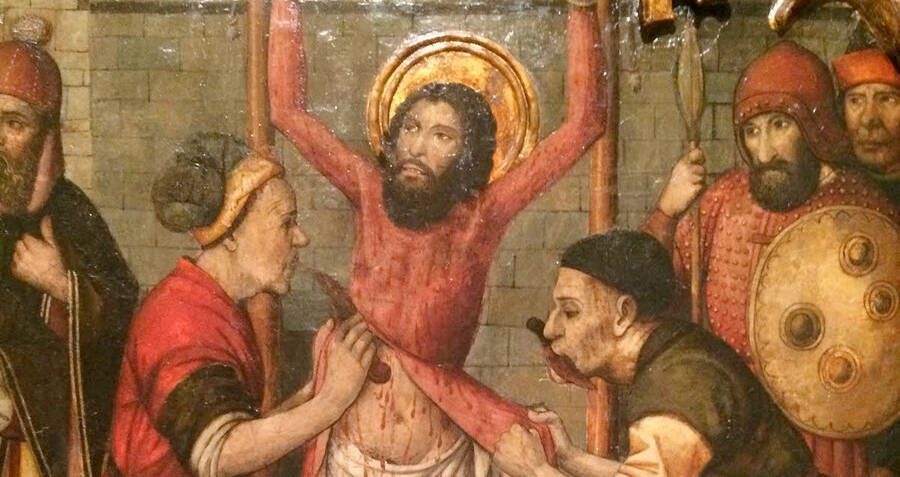
Flaying is a horrific punishment that involves the removal of a person's skin. It was a method of torture used in different cultures and periods of history. The victim would have their skin cut or peeled away from their body, either partially or entirely. Flaying was an excruciatingly painful process that resulted in severe physical trauma. The exposed flesh would leave the victim vulnerable to infection, bleeding, and shock. The pain experienced during flaying was intense and unimaginable.
This punishment served as a means of inflicting terror and punishment upon individuals, often for crimes or as a public spectacle. The act of flaying aimed to dehumanize the victim and send a brutal message to others, serving as a deterrent against disobedience or resistance. The practice of flaying stands as a testament to the depths of human cruelty and the horrors that some individuals have endured throughout history.
#8-Thousand Cuts
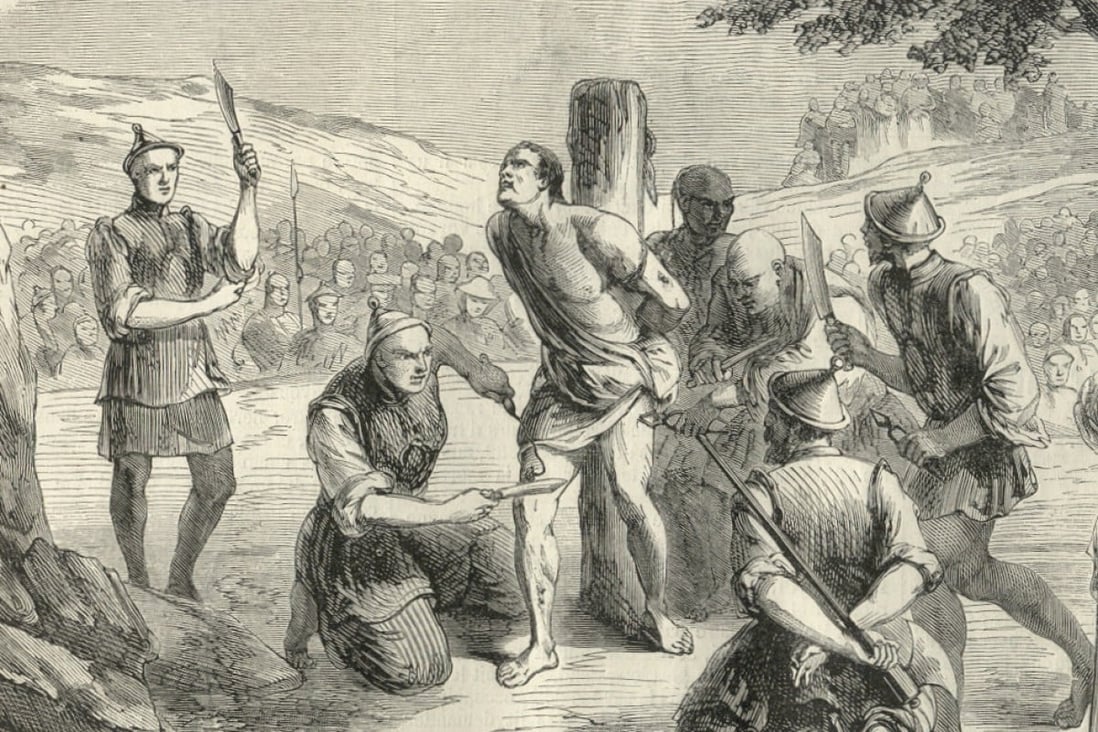
The punishment of "1000 cuts," also known as death by a thousand cuts or lingchi, was a method of execution that originated in ancient China. It was a slow, excruciatingly painful process designed to prolong the suffering of the condemned individual. The execution would begin with the victim being tied or restrained while the executioner methodically made a series of small, shallow cuts all over their body. The intention was not to deliver fatal wounds immediately, but rather to draw out the agony and maximize the pain endured by the victim. Each cut inflicted would gradually accumulate, causing increasing pain and blood loss. The executioner would carefully ensure that the wounds were not fatal, prolonging the suffering over an extended period. This method aimed to subject the victim to a prolonged and torturous death, both physically and mentally.
The 1000 cuts punishment was not only physically agonizing but also psychologically traumatic. The condemned person would witness their own body being mutilated, feeling the relentless pain of each successive cut. This form of punishment was not limited to China and has also been recorded in other cultures and periods throughout history. Its purpose was not only to serve as a means of execution but also as a public display of the consequences for challenging authority or committing heinous crimes. The punishment of 1000 cuts serves as a stark reminder of the extreme cruelty and inhumanity that humans have inflicted upon one another. It exemplifies the lengths to which individuals and societies have gone to exact punishment and control through unimaginable suffering.
#9-Sawing

Sawing, also known as death by sawing, was a horrifying method of execution used in various historical periods. This brutal punishment involved the victim being tied or restrained, usually upside down, while a large saw was used to cut through their body. The sawing process would typically begin at the groin area and progress slowly towards the head or vice versa, depending on the desired outcome. The executioners would deliberately prolong the process, deliberately inflicting intense pain and suffering on the victim. As the saw cut through the victim's flesh and bones, the pain would be excruciating. The slow and deliberate nature of sawing intensified the agony, often leading to shock, immense blood loss, and eventually death.
Sawing was not only physically agonizing but also psychologically torturous. The sight and sound of the saw cutting through the body, coupled with the prolonged suffering, left a lasting impact on both the victim and any witnesses. The purpose of sawing as a punishment was to instill fear and discourage others from committing similar crimes or acts of defiance. It served as a brutal reminder of the consequences that awaited those who challenged the authorities or engaged in activities deemed unacceptable. The use of sawing as a method of execution stands as a grim testament to the depths of human cruelty and the immense suffering that has been inflicted upon others throughout history.
#10-Rat Torture
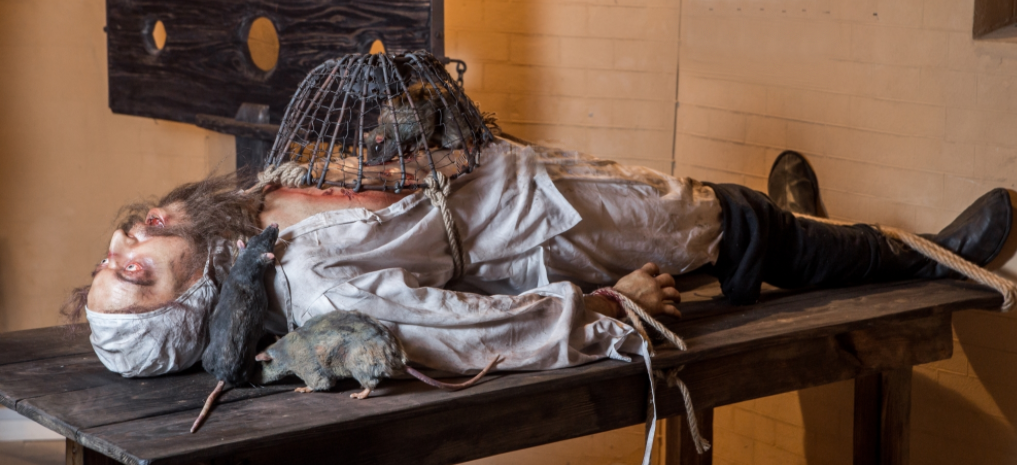
Execution by rats, also known as rat torture or rat torture chamber, was a gruesome method of punishment that was used in various parts of the world during medieval times. This horrific practice involved placing a cage or container filled with rats on the victim's body and then applying heat to the container. As the heat increased, the panicked and agitated rats would desperately try to escape, resorting to gnawing and clawing their way through the victim's flesh in search of an exit. The rats, driven by fear and hunger, would inflict deep wounds and cause immense pain as they burrowed into the victim's body. Execution by rats was an agonizing and slow process. The victim would endure excruciating pain as the rats devoured their flesh, often leading to severe infections, blood loss, and, ultimately, death.
This method of execution was designed to be a public spectacle, instilling fear and terror in the minds of onlookers. It was intended to serve as a deterrent, a graphic display of the consequences for perceived crimes or acts of defiance. The practice of execution by rats stands as a grim reminder of the extreme cruelty that humans are capable of inflicting upon one another. It exemplifies the depths to which humanity has descended in the pursuit of punishment and control, leaving a chilling mark on the annals of history.

Comments
Post a Comment